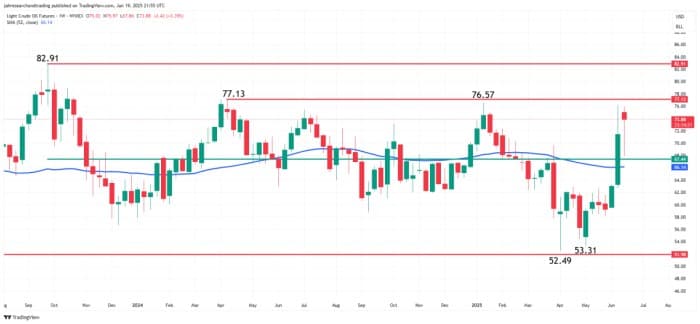Crude oil prices climbed sharply last week as the conflict between Israel and Iran worsened, raising fears that global oil supplies could be affected. The situation quickly became one of the most closely watched issues in the oil market, pushing prices to their highest levels since January. West Texas Intermediate (WTI) and Brent crude both rose nearly 7% over the week, as investors responded to the growing threat of disruptions in the Middle East.
The jump in prices came after Israel launched airstrikes on Iranian military and nuclear targets. Iran answered with drone and missile attacks on Israeli infrastructure. These direct strikes marked a serious escalation, and markets took notice. As the conflict entered a second week, there was no indication that either side was looking to stand down, and that kept traders on edge.
Why the Strait of Hormuz Matters to Oil Prices
A major reason oil prices moved higher was concern about the Strait of Hormuz. This narrow waterway off Iran’s southern coast is one of the most important oil routes in the world. Each day, about 18 to 21 million barrels of oil and petroleum products move through the strait—roughly one-fifth of the world’s oil supply.
So far, no attacks have taken place in the strait, and oil is still moving. But traders are worried that if the fighting spreads, tankers or export facilities could be targeted. That would put global supplies at risk, especially since Iran exports about 3.3 million barrels…

